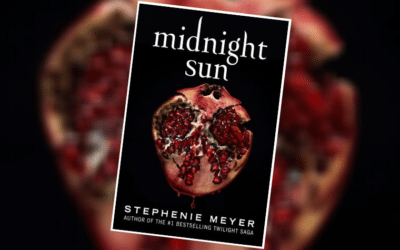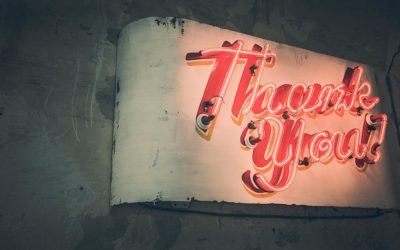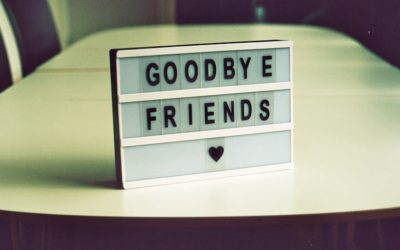***Here’s your spoiler warning: if you’re behind on a show and there’s an LGBT female character she’s probably dead by now.
According to GLAAD’s annual report, 2017-18 has been the most diverse year to date for LGBT+ representation on screen. But we didn’t get here by accident – at least not with regards to LGBT+ visibility.
Can you still hear the riot calls of #LexaDeservedBetter echoing through the internet? If not I’m assuming you haven’t been on Tumblr in the past two years.
While it’d be naive to give the movement full credit for launching this successful year of representation, it’d be equally foolish to refute its effect.
It was, after all, a movement that raised tens of thousands of dollars for charity, preceded a decline in lesbian and bi character deaths and provoked rather amusing responses from outside showrunners.
But first, let’s get into the drama.
How the movement began:
On March 3, 2016, the CW inadvertently caused a gay riot when they killed off The 100’s beloved character Lexa in an infuriating trope scornfully dubbed Bury Your Gays. The CW – particularly 100 showrunner Jason Rothenberg – recoiled at the backlash, throwing their hands in the air and yelling “we didn’t know!”
But they did know.
And that is truly what sparked the rage that led an unexpected movement.
Enjoy this former 100 writer responding to asks via his Tumblr:

No shit.
Recently the topic of diversity in Hollywood has gained a national audience through the #MeToo movement firing back at sexism and abuse in the industry and Black Panther disproving claims that audiences won’t watch a mostly black cast. But the battle for respect and inclusion is frustratingly old. There have been smaller battles fought by numerous groups over the past few decades with varying degrees of success.
It became this pattern of Hollywood doing something racist/sexist/homophobic/etc and fans calling them out. Execs and showrunners would offer a flat apology, if even that, people would grumble but most would move on, and then the pattern would restart.
I guess by 2016 gay and bi women were over it.
Why were people angry?
It was the perfect mix of betrayal and timing.
From 2015 to 2017, 62 lesbian and bi women were killed off of shows, setting a record during the 40 years that the Bury Your Gays trope has been analyzed. While these 62 deaths represented 10-percent of deaths on TV, lesbian and bi women didn’t even make-up 10-percent of all characters.
Naturally, LGBT+ viewers were pretty damn concerned about Lexa as The 100 grew her story arc and relationship with leading lady Clarke (#Clexa).

So much gay pining.
Writers from the show expressed their understanding on social media: connecting with LGBT+ fans and, many claim, creating a sense of security. (You can read the entirety of that here).
And then after Lexa and Clarke finally got together, the battle-tested warrior – the leader of the 12 clans – was killed by a stray fuckin’ bullet.

Fans were devastated.
I get that our reactions might seem childish and ridiculous to straight readers. But you see yourselves everywhere and god that is something I would kill for.
It’s something we kill ourselves over – lack of acceptance, lack of understanding, lack of hope.
One of the greatest powers of storytelling is its ability to recreate the world. Harry Potter brought magic to life; Superman took us to new worlds; Black Panther introduced us to a society untouched by colonization.
Fiction isn’t beholden to the status quo and yet it still, a majority of the time, reflects the experiences of a straight, often white, male world. And while there isn’t anything wrong with being a straight white guy, that’s not the only story to be told.
The LGBT+ community, particularly the youth, are constantly seeing their representation killed off on screen. We can’t even exist in pretend worlds.
When you internalize this as part of a population who already has a high suicide rate it shockingly doesn’t increase feelings of worth, security or hope.
Maybe this fictional world we’re watching doesn’t have homophobia so the concept of killing off one of the few characters who happen to be gay doesn’t seem problematic. His or her sexuality is irrelevant in this place. But that’s not the case outside of fiction where being LGBT+ does have consequences and good representation is scarce.
Fans did something about it:
A lot of anger from the “older” lesbian and bi-lady generation (20 and up – we’re weird about age ok) came partially from seeing this happen AGAIN, but also from watching the reaction of young bi and gay girls who truly hadn’t experienced the trope before.
After that record-breaking year of bi and lesbian character deaths (42 of the 62 deaths happened in 2015-16), this was the thing that broke us.
So fans did something.
Three days following the episode, looking to create a way for people to process their emotions, a behavioral therapist/fan created a fundraising page for The Trevor Project, a non-profit that works to prevent LGBT+ suicides.
Over $155,000 was raised through more than 4,100 donations.
#LexaDeservedBetter trended on Twitter; LGBT Fans Deserve Better and We Deserve Better went from hashtags to websites; people bought fucking billboards and ClexaCon became an actual thing (it’s in London this year).

The backlash was mighty, to say the least.
And it seemed to make a difference.
Some showrunners started addressing the trope. In a very uncharacteristic move, Wynonna Earp’s showrunner Emily Andras told fans during a 2017 panel that both Waverly (bi or gay) and Nicole (gay) would make it through the show’s first season.

Appropriately their shipper name is Wayhaught. – Photo courtesy of SyFy
This courtesy, Andras explained, was due to the anxiety and distrust following The 100’s choice. She wanted fans to enjoy her show and the burgeoning relationship. (This didn’t happen for the following seasons but so far so good – and alive).
For LGBT+ fans, this awareness, though maybe not to Wynonna Earp’s level, has been more present among writers, creators and cast since 2016.
Our words finally promise consequences. But we’re not all vengeance, “blood must have blood.”
The other side of that coin is that LGBT+ fans are highly engaged when shows incorporate good representation.
Multiple billboards were bought to spite a guy we hate. Think of what LGBT+ fans will do when we adore you?
We’ll fight for you. So stop killing us.
This is the start, not the end

When TV represents LGBT+ people, it’s predominantly as white gay men. This most recent year, gay men made up 47-percent of all LGBT+ characters on broadcast, 42-percent on cable and 24-percent on streaming services. Those numbers are about half when it comes to lesbian and bisexual visibility, except on streaming services where most LGBT+ characters are lesbians.
Trans representation doesn’t top 9-percent in any category.
If you factor race in this equation, the numbers fall substantially but compared to previous years, 2017 and now 2018 are making amends.
We’re seeing some surprising, but long overdue strides in diversifying entertainment and not just for LGBT+ fans.
Broadcast, cable, and streaming services have launched shows like Black Lightning, The Bold Type and One Day at a Time with not only lesbian characters, but lesbian women of color. While visibility is a struggle for LGBT+ characters, that representation is even weaker, a more problematic, for LGBT+ people of color.
Black LGBT+ characters have the highest percentage of regular character representation on broadcast, making up 20-percent of all LGBT+ parts, but 20-percent of 6.4-percent isn’t exactly a sweeping scope of visibility. For Latinx and Asian LGBT+ characters, representation drops drastically.

Graph from the 2017-18 GLAAD Where Are We On TV report
While I’m ecstatic that the overall number of LGBT+ characters is up I don’t want us to stop pushing for better representation and I want allies to join us. On the surface, hearing that LGBT+ visibility has grown seems really promising, but it’s harder to get excited about it when you look at the numbers. There are 901 series regular characters on broadcast television and 6.4-percent of them are LGBT+. 58 out of 901 characters is recording breaking?
It’s time to move past Bury Your Gays – to stop unnecessarily killing off LGBT+ characters for shock value or to further someone else’s plot. We are not disposable.
We can do better. We’re getting there.
Think of your favorite character.
No actually do this. You’ve made it this far in the article. Commit.
How did that character inspire you? Did you connect with his or her struggles? With their temperament? With their love story? Was there just this innate vibe? Could you see yourself as them?
We just want that too.
#LGBTFansDeserveBetter.




